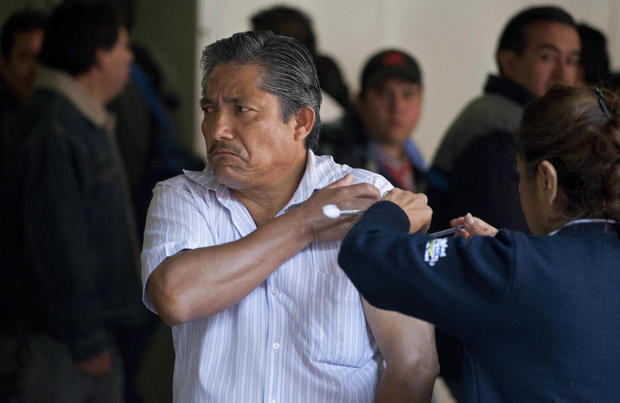Mexican health officials keep careful eye on Swine flu spike
MEXICO CITY -- There were more swine flu (H1N1) cases for the month of January 2012 than the total cases for the whole of last year, according to Salomon Chertorivski, Mexico's health secretary. But in an effort to allay fears regarding the latest influenza scare, the health secretary noted that H1N1 cases were down overall in 2011.
"There's no cause for alarm, or worry, but rather action," said Chertorivski, while addressing a group of reporters over breakfast in Mexico City on Tuesday.
A total of 32 people have died in Mexico due seasonal influenza (29 of the victims had H1N1). Chertoriviksi said 70 percent of the recent fatalities also had other health issues such as diabetes, obesity or cancer.
Some 1,623 influenza cases were reported from mid-December 2011 to January 27, 2012 - of which 1, 456 cases were H1N1. An indicator for alarm or cause to suspect an epidemic would be if there were more than 30 cases of H1N1 per 1,000 people. Today that indicator is at 8 per 1,000, Chertorivski said. A total of 1,000 flu cases were reported in Mexico in 2011, with 35 deaths from all flu seasonal influenza Strains; 250 of those 1,000 flu cases last year were confirmed as swine flu.
Chertorivksi emphasized the importance of hygiene and not letting one's guard down.
"You've got to wash your hands, use antibacterial gel, cover your nose if you sneeze, and if you have symptoms including a temperature above 38.5, including muscular pain, an intense sore throat and problems breathing, you've got to go the doctor," Chertoriviski said.
Mexico was the epicenter of a surprise swine flu outbreak in 2009, when H1N1 - at the time a faceless, unknown virus -- brought Mexico City to a standstill. In 2009 the World Health Organization declared H1NI the first global flu pandemic in 40 years. Back in 2009, authorities closed down many businesses including schools and restaurants to avoid contagion. Walking down empty Mexico City streets back then reminded me of the movie "Outbreak."
Today, however is very different.
"H1N1 has become just another strain of influenza and is circulating as part of the seasonal flu which goes from October to March," Chertoriviksi said, adding that health services in Mexico are fully equipped with enough Oseltamivir (commonly known by the brand name Tamiflu). There's a total of 1.4 million reserve doses in case of an emergency, the health secretary confirmed.
Dr. Pablo Kuri Morales, Mexico's deputy health secretary for prevention and promotion of health, an expert epidemiologist who played a central role in the government response to the 2009 epidemic, expects there to be to be an increase in cases during February and March. He then expects a decrease in April, and explained that the latest H1N1 cases do not constitute an epidemic, as they are within the expected number of cases.
Health authorities in Mexico recommend children under five years old, pregnant women and the population over 60 years of age, including patients of any age with HIV and diabetes get yearly vaccinations to prevent contagion.
